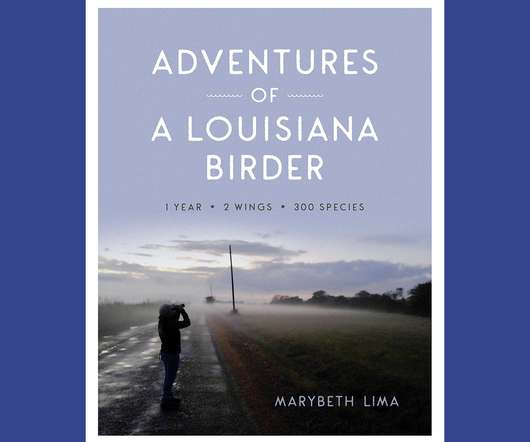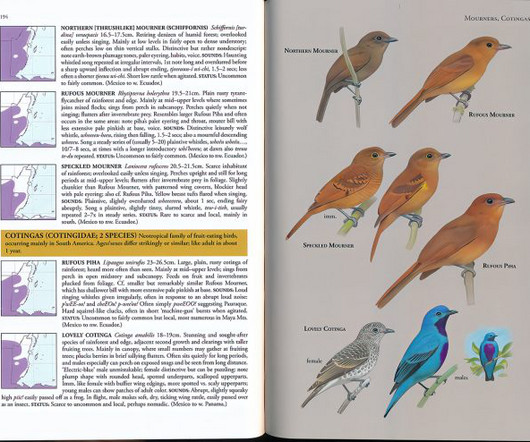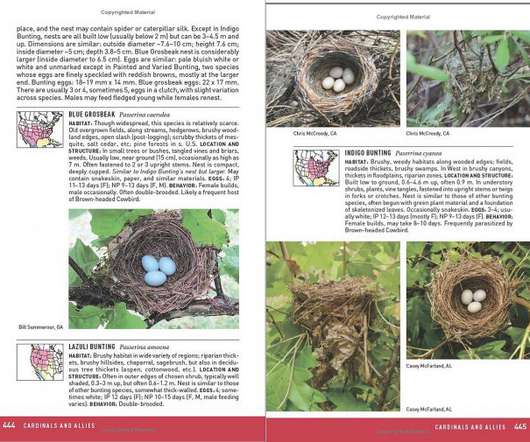Adventures of a Louisiana Birder: One Year, Two Wings, Three Hundred Species–A Book Review
10,000 Birds
MAY 4, 2021
The book focuses on two listing events: her 2012 Louisiana Big Year and her 2016 Louisiana 300 Year. Her previous book is Building Playgrounds, Engaging Communities: Creating Safe and Happy Places for Children (2013), about a 15-year project developing partnerships between LSU students and the Baton Rouge public school community.































Let's personalize your content